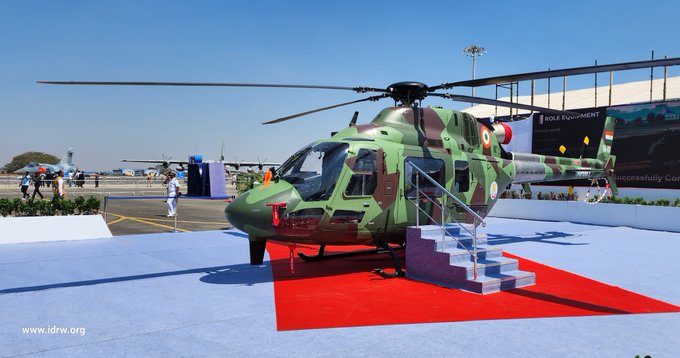SOURCE: AFI


A crucial meeting scheduled for February 28 at Indian Army Headquarters in New Delhi could prove decisive for the future of the Light Utility Helicopter (LUH) program. Spearheaded by Hindustan Aeronautics Limited (HAL), the LUH is positioned as a modern, indigenous replacement for the Indian Army’s aging fleet of Cheetah and Chetak helicopters, which have served as lifelines in high-altitude and remote operations for decades. However, recent developments—including technical hiccups, safety concerns, and evolving Army requirements—suggest that the path forward for this ambitious program is anything but straightforward.
Designed by HAL’s Rotary Wing Research and Design Centre, the LUH is a 3-tonne-class helicopter intended to meet the Indian Armed Forces’ pressing need to phase out the obsolete Cheetah and Chetak platforms, many of which are over 30 years old and nearing the end of their technical life. With a maximum speed of 260 kmph, a service ceiling of 6.5 km, and a range of 350 km, the LUH promises enhanced performance in the rugged terrains of the Himalayas and other challenging environments. The helicopter’s glass cockpit, single Shakti engine, and crash-worthy design mark it as a significant upgrade, tailored for roles like troop transport, reconnaissance, and casualty evacuation.
HAL has made strides in the program, with the LUH receiving Initial Operational Clearance (IOC) in 2021 and completing high-altitude trials in the Himalayas by 2020. The Defence Acquisition Council (DAC) approved the procurement of 12 Limited Series Production (LSP) units in November 2021—six each for the Army and Indian Air Force—with deliveries initially slated for August 2022. Yet, delays in certifying the autopilot system pushed this timeline back, with the first deliveries now expected by mid-2025. The Army alone has a requirement for over 200 LUHs, reflecting the scale of the replacement challenge.
In response to the Indian Army’s operational feedback, HAL has embarked on developing the Mk2 variant of the LUH. This upgraded version will incorporate key enhancements, most notably an autopilot system—a specific demand from the Army to improve stability and reduce pilot workload during high-altitude missions. Air Chief Marshal V.R. Chaudhari confirmed this development in late 2024, noting that HAL is also implementing “several minor improvements” based on the Army’s recommendations. These tweaks aim to refine the LUH’s performance, addressing issues identified during early evaluations of the baseline model.
The inclusion of an autopilot, sourced from Safran Electronics and currently undergoing final certification, is a critical step. It promises to enhance the helicopter’s reliability in the thin air and turbulent conditions of regions like Ladakh and Siachen, where precision and automation are vital. However, the integration of this system has not been without challenges, contributing to the delay in LSP deliveries and raising questions about the program’s readiness for full-scale production.
Despite HAL’s progress, the LUH program has encountered turbulence. The grounding of the HAL Dhruv fleet in 2023—following a series of crashes attributed to transmission and control issues—cast a shadow over the company’s helicopter portfolio, including the LUH, which shares design lineage with the Dhruv. While the LUH has not faced similar incidents, the Army’s heightened scrutiny of safety and reliability has slowed momentum. Posts on X from defense analysts noted that top Army officers declined a demo flight of the LUH at Aero India 2025, citing “safety protocols,” though the Air Chief took a ride, signaling confidence in the platform.
The February 28 meeting comes at a critical juncture. The Army is weighing its next steps amid stalled negotiations for the Indo-Russian Ka-226T deal, which was meant to supply 200 helicopters but has been mired in disputes over indigenous content and geopolitical tensions since 2016. With the Ka-226T project likely dead, the LUH has emerged as the Army’s primary hope, yet its timeline lags behind the urgent need to retire over 130 vintage Cheetahs and Chetaks still in service.
NOTE: AFI is a proud outsourced content creator partner of IDRW.ORG. All content created by AFI is the sole property of AFI and is protected by copyright. AFI takes copyright infringement seriously and will pursue all legal options available to protect its content.